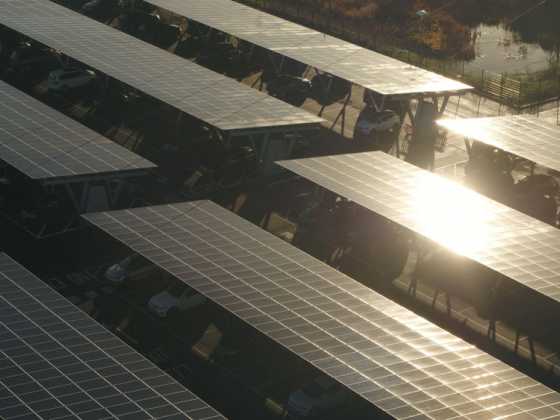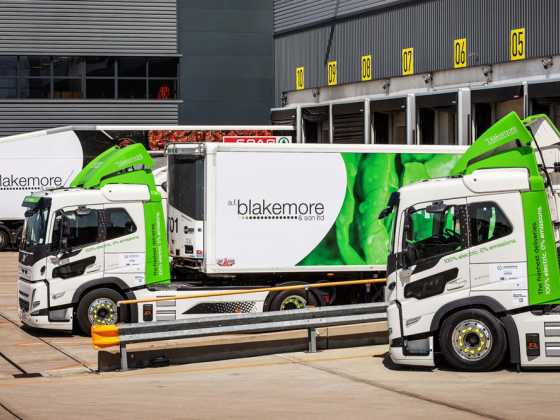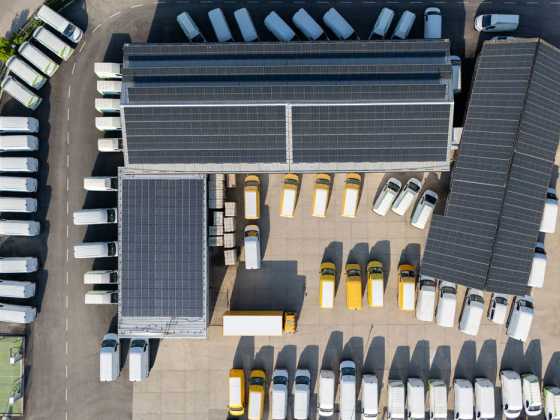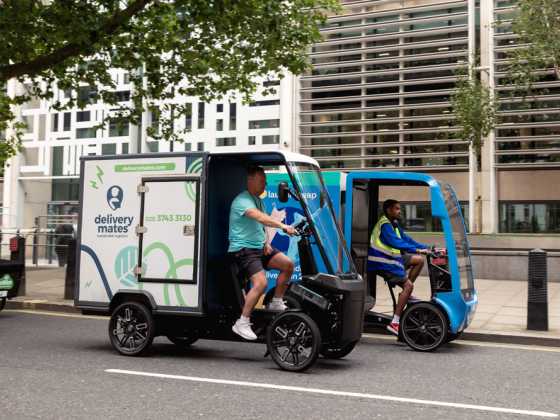Driving the future
Through city centre race tracks and single seater electric racing cars, Formula E has been hailed as way to get motorsport fans and the public to connect with the idea of electric vehicles. GreenFleet reports on the upcoming season and how EV technologies correlate between race track and the road
 Britain’s first FIA Formula E electric car race was held in London’s Battersea Park on 27-28 June 2015. The 11-round FIA‑accredited championship visited such diverse cities as Berlin, Miami, Monaco and Moscow in its debut season and the double-header around the 200-acre park in the UK capital brought the curtain down on an exciting new era in motor racing.
Britain’s first FIA Formula E electric car race was held in London’s Battersea Park on 27-28 June 2015. The 11-round FIA‑accredited championship visited such diverse cities as Berlin, Miami, Monaco and Moscow in its debut season and the double-header around the 200-acre park in the UK capital brought the curtain down on an exciting new era in motor racing.
Fully-electric racing cars
The 2014/2015 FIA Formula E Championship started on 14 September 2014 when the fully‑electric single-seater racing cars rolled off the starting line in Beijing. Designed to compete on city centre circuits all over the world, the racing cars resemble those in Formula 1, yet are near silent but still capable of speeds in excess of 150mph. Ten teams made up the 2014/2015 grid, with globally recognisable names from the motorsport world, including Alain Prost and Michael Andretti. Supporters of the ground-breaking series included Sir Richard Branson and film star Leonardo DiCaprio. High-profile ex-Formula 1 drivers were drawn to the series, too: Jaime Alguersuari, Sebastian Buemi, Lucas di Grassi, Bruno Senna and Jarno Trulli all sat behind the wheel of high-tech, 200kW/270bhp Formula E racers last season.
With environmental priorities constantly shifting, FIA President Jean Todt said at the launch of Formula E that as the flagship organiser of motorsport, the FIA had ‘a responsibility to keep up with the changes’ taking place in a potentially greener world. He reported that the FIA’s vision for new technology and the fact that electric cars may one day become commonplace in our urban environments, made globally cities ideal for showcasing the idea of an electric racing series. Todt declared that the first season would be examined carefully to see what did and didn’t work, fully expecting it to gain popularity. He reported that an increased framework would support and encourage the evolution of the series over a number of years, in addition to opening up the competition between battery and motor suppliers.
The 2015/2016 season is an embodiment of that declaration. Although the number of rounds stays at 11 – with London hosting a pair of races as in 2015 – a new ePrix in Paris is scheduled for 23 April. With a route built up around the architectural complex of Les Invalides, the inclusion of such a high-profile city adds further prestige to the burgeoning electric championship. Once again, Beijing is the first host of the Formula E circus. The 2016 official entry list features countries as far flung as the championship itself, with teams from China, France, Germany, India, Japan, the UK, and the US.
‘Providing a catalyst’
Among the 2015/2016 runners and riders is the DS Virgin Racing Formula E Team, a collaborative entry from PSA Peugeot Citroën’s DS brand and Sir Richard Branson. Branson, founder of the Virgin Group recognised that the technology which is showcased in Formula E should filter down into the electric cars and vehicles we all want to drive: ‘I’m thrilled that Virgin Racing is playing a leading role in another of Formula E’s visions, that of attracting the large automotive OEMs into the sport in order that the technology that is developed flows down into the cars that we can all drive. I have no doubt the partnership will prove a great success, not only on track but also in providing a catalyst to develop the electric vehicles of the future.’
Open championship
In a marked contrast to the 2014/2015 season, the 2015/2016 series is an open championship, with eight manufacturers providing powertrains to the ten competing teams. The new homologation rules are only applicable to powertrain components such as the e-motor, the inverter, the gearbox, and the cooling system; all of the cars’ body work will remain the same and will be shared throughout the teams. The FIA states that this aims to prevent costly aerodynamic developments. Further regulation changes will allow for battery development.
The first season of the FIA Formula E championship saw identical carbonfibre/aluminium-constructed cars being used, designed and built by Spark Racing Technology with expertise from McLaren, Williams, Dallara, Renault and Michelin. With a Formula E car’s 0-62mph time of 3.0 seconds, most drivers can be classed as fast.
More accessible
More accessible than most forms of motorsport from a public supporter’s view, the Formula E championship’s six testing sessions at Donington Park in August were free to enter. Fans can also directly affect the performance of their favourite drivers’ car. By ‘FanBoost’ voting for them prior to a race at http://fanboost.fiaformulae.com, a five-second ‘power boost’ will be applied to the top three drivers’ who have attracted the most votes. This increases their car’s performance from 150kW to 180kW. Supporters can vote for their favourite drivers as many times as they wish until the voting deadline before the start of each race.
Electric vehicle technology
So just how will electric vehicle motor racing affect the mainstream car market? As the Formula E series is a global championship and therefore enjoys a global audience, it showcases electric and green vehicle technology to potentially millions (or billions when online social interactions are taken into account) of viewers and motorsport fans both on-site and via interactive media streams.
From an accessibility angle, motorsport fans are given the chance to connect with the drivers as well as affecting the performance of their cars via the fan boost voting system. This innovative element of interactivity allows spectators of the sport to indirectly connect with the technology, too. Whether an electric vehicle fan or not, they can see how the technology works and how it affects a car’s performance.
While racing cars are obviously faster and lighter than road cars, there are correlations between the two. Just like a road electric car, an electric racing car has to be re-charged. Forbidden during qualifying and the races themselves, charging of the Formula E racers takes place during the non-qualifying practice periods.
Greater EV powertrain development
The open championship rules will also allow for greater electric vehicle powertrain development between the competing teams. It is hoped that this should filter down and speed up development for EV technology in the wider passenger car market. A long‑held practice, motorsport has been the catalyst for so many developments we now see in road cars and there’s no reason why this should change for Formula E.
Battery performance is just one example. The series has proved that lithium-ion batteries can be developed which are capable of powering a 140mph racing car, even if a car swap was inevitable due to the batteries being unable to power a car for the whole duration of a race. It is expected that teams will be able to choose which battery they use for the 2016/2017 season, which should potentially help with that component’s development.
Efficiency and energy management will also play a part in a car’s performance. Several gearbox options are being utilised in the 2015/2016 Formula E championship, from single to five speeds as used on last season’s car and used again for this year by Team Aguri.
Positive effect
Carlos Ghosn, the head of the Renault-Nissan Alliance believes in the series and has stated that racing on high-profile city centre circuits has helped the image of electric cars. In 2011 the Renault-Nissan Alliance targeted sale of 1.5 million electric cars by 2016. However, there’s still some way to go, with sales up until July 2015 just passing a figure of 250,000. It’s not just a Renault-Nissan Alliance issue, though – with EVs making up a very small fraction of the 85 million cars sold globally watch year, cost and range anxiety are still the major pinch points stopping many from taking the plunge.
The Formula E series has staged ‘Formula E Motor Shows’ alongside selected ePrix during its first season, giving the public and fans alike the chance to see first-hand how the advances in technology, safety and speed on the racetrack can influence and drive forward the development of passenger electric and hybrid vehicles.
Manufacturers are working to bring the cost down. With technology moving as fast as it does, it may not be in the too distant future until we see longer ranges, that may therefore encourage take-up which in turn will bring the overall initial costs down. With a rise in UK EV sales reported during the first quarter of 2015 compared to 2014, the tide appears to be turning.
While there may still be some way to go, any high-profile motorsport series which puts electrically-powered cars in front of the average ‘petrolhead’ – and that’s why the city centre racing venues are critical – can only have a positive effect on both the average drivers’ perceptions of EVs and the market as a whole in the longer-term.
Further information
www.fiaformulae.com






